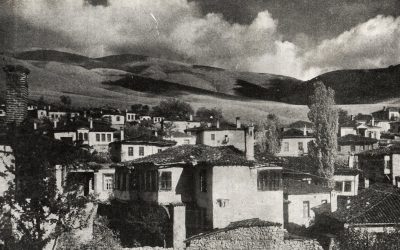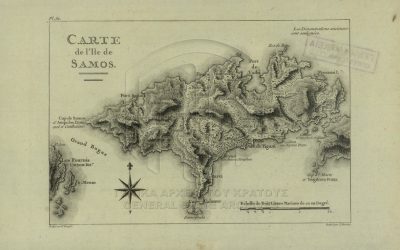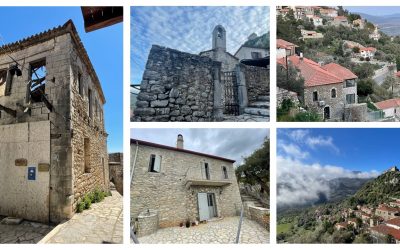By Alexandra Kiritsy & Gregory Kontos
Alexandra: Yiayia & Me is all about encouraging and helping Greeks around the world to get involved with family history to whatever degree they’d like! We know and appreciate how people connect with their family heritage in a multitude of ways, and so that’s why we cover a wide variety of topics! My personal interest in learning more about traditional Greek costumes led us to interview a young Greek, Nikos Bariamis.
Gregory: Nikos lives in Sparta, Lakonia, and got interested in Greek history and tradition at a very young age. His special passion – traditional Greek songs and dances. I met him when he was a student in college and I was still in high school. At that point, Nikos had already started recording the elders of his village singing rare local songs. Back then, he would still use a little recorder, and I recall discussing with him how he could get a better one… Today, Nikos is equipped with all devices necessary for a professional work of high cultural value. In 2018, he founded a traditional dance school in Sparta, and, in 2019, he released a music album of local song recordings, titled “Ζάραξ: Χοροί και Τραγούδια από τη Νοτιοανατολική Λακωνία” (Zarax: Dances and Songs of Southeastern Lakonia), which is available for sale. Nikos’s YouTube channel is also very interesting and we urge our readers to check it out -but only after they finish reading this article! 🙂
Alexandra: We are especially glad of this opportunity to learn about traditional Greek costumes from someone like you, Niko! So, please, tell us, what is the history of the Greek costumes we see today? What has influenced their style?
Nikos: Greece’s traditional costumes, as they survive today as museum exhibits or “theatrical costumes” of dance performances, present an enormous variety of garments, textures, fabrics, colors and needlework. However, with a closer and more penetrative look, we notice the existence of a common “costume-womb,” that of the Byzantine civilization. Throughout the centuries, the Byzantine and, by extension, the Hellenic civilization came in contact with the peoples of the East and, later, with the Western civilization, borrowing costume elements from both sources. All that cultural ferment and garment exchange led to the known variety of Greek costumes and contributed to their categorization. Apart from the West and the East, which profoundly influenced the costume history of the Greek world, I consider “Amalia,” the well-known costume, a very special case. This is the costume that Queen Amalia (1836-1862) designed for herself and the ladies of the Court, by combining several elements of Greece’s costumes. This particular costume was spread very quickly around rural and urban Greece, to such an extent that we can characterize it a “national costume,” as it is still worn in national parades in Greece and abroad by our compatriots. Indeed, Amalia was the most successful influencer of her time, and, in fact, without Instagram!
Alexandra: What are the key elements of the Greek costumes? What articles of clothing are essential?
Nikos: Essential articles of Greek costumes are the pieces that make them up themselves. We could discuss about these for hours, about their appearance and their connections. To me, most characteristic are the embroideries and the way in which fabrics are cut and sewed, in order to compose a costume. Embroideries, especially those made by the women themselves, highlight each area’s aesthetic and particularity in the Greek costume map. Fabrics’ cutting and sewing indicate the historicity of the cloth and the extent to which it has changed throughout the years and the centuries. The most important element of all Greek costumes is the shirt; it will be found in any Greek costume. It is the most plain, Doric, and practical cloth for people, and was sewed and embroidered by women themselves, as it was the only piece of cloth being in direct contact with their naked body. For this reason, its use was often linked to very important stations in human life (e.g. marriage, death).
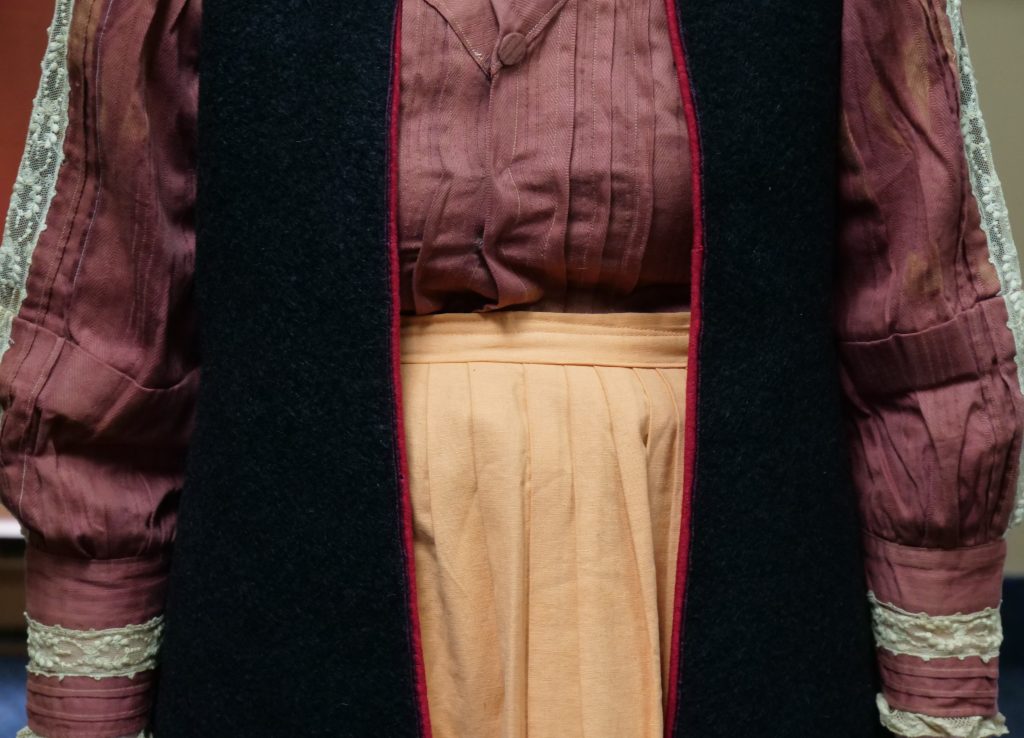
Alexandra: How do Greek costumes vary across the different regions of Greece?
Nikos: The categories of Greek costumes are not discerned based on locality; in the Aegean, for instance, we find both costumes with kavadi (long garment that is open vertically or crosswise) and costumes with a dress. My personal research in Lakonia, based both on archival and oral sources, has led me to the conclusion that in Lakonia there were costumes with kavadi, costumes with a dress, costumes with a segkouni (thick, woolen coat for women), or combinations of them. Variety depends on the raw material. For instance, areas with extensive stock-farming used wool as a basic material; areas with flatlands and cotton production used cotton. In Sparta, for example, where sericulture was quite advanced, they often wore silk clothes. Weather conditions were another diversity factor. Mountainous areas would used more and thicker clothes for obvious reasons.
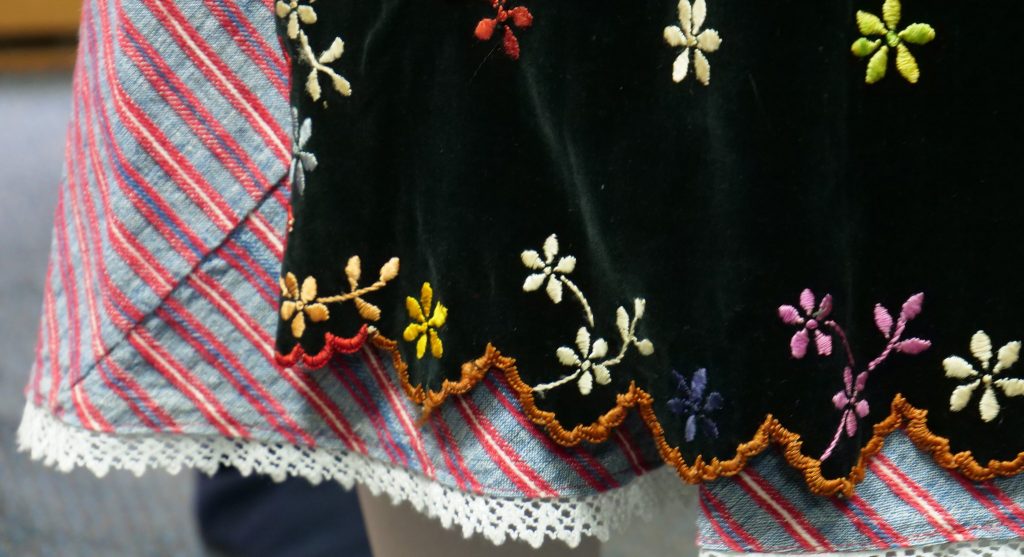
Gregory: This point about Spartan sericulture and its direct impact on local clothing is particularly interesting. In fact, in a recent webinar we talked about the dowry of a Spartan woman back in 1833. I would like to present some of the information, as I find it very relevant: On September 1st, 1833, Anastasios Liouropoulos of Anavryti visited notary Chartoularis in Sparta and presented to him a locked box. That box contained the dowry of his wife, daughter of the late Zafeiris Karamalis, who had passed. Anastasios wanted the notary himself to record what was in the box, so that his late wife’s brothers would not question him. So, opening the box the notary found: two pieces of silk fabric, three silk male shirts, 4 pieces of silk underwear, a traditional dress, a piece of handiwork sewed with tulle all over and flowers on the two ends, three first-class gold-embroidered belts, etc.
Alexandra: Last question, Niko. How do Greek costumes compare to those of other Balkan countries?
Nikos: I believe that a significant part of Greek civilization is directly associated with Balkan civilization, if the former cannot be considered part of the latter. Especially the costumes of Northern Greece look very much like those of neighboring Balkan peoples. Who took it from whom? Does it really matter?
Note: Nikos’s interview continued wth questions about traditional Greek dances, his dance school in Sparta and the album he released. All this will be published next week in a separate article. So, please, stay tuned!
Share your story or consider making a donation by clicking here, and make your yiayia proud!

